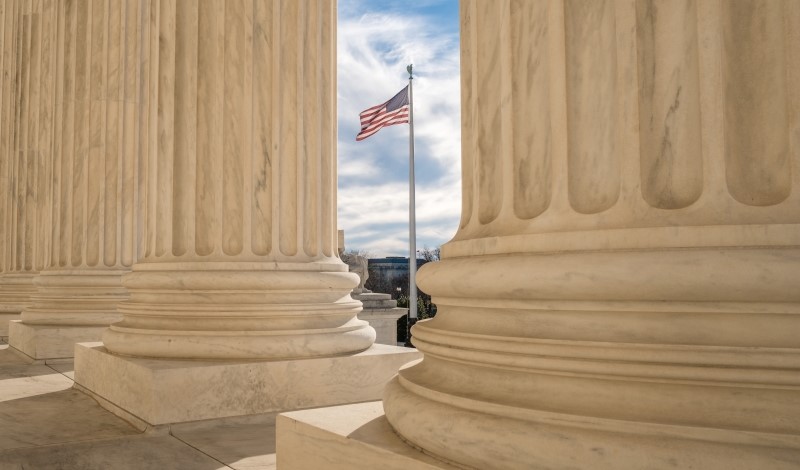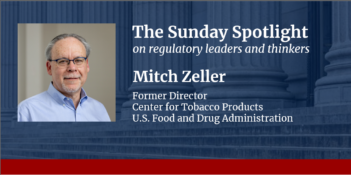
With several key decisions this term, the Supreme Court has shaken up prevailing governing doctrines and produced substantial legal uncertainty.
“Chevron is overruled.”
With these three words, the U.S. Supreme Court created a legal earthquake. Its decision on June 28 in the case of Loper Bright Enterprises v. Raimondo abandoned one of the most widely cited decisions in the Court’s history: Chevron v. Natural Resources Defense Council.
In overruling Chevron, the Court dramatically signaled a shift in a 40-year understanding about the allocation of responsibilities between administrative agencies and courts over key decisions affecting people’s lives and livelihoods—ultimately giving more power to the federal judiciary.
Along with other consequential high-court rulings, the Supreme Court in Loper Bright has shaken the ground beneath the administrative state.
Under Chevron, courts were instructed, as an initial matter, to determine whether a specific provision of a statute implemented by a federal agency was clear. If so, courts needed to enforce the statute no matter what the agency thought the statute meant. But statutes often contain ambiguities or gaps, especially in the face of new technologies or scientific evidence. In those instances, Chevron told courts to give deference to the agency, as long as it could be fairly inferred that the U.S. Congress had empowered the agency to decide the best way to understand the law.
When the Supreme Court formally disavowed Chevron deference, it instructed judges to make their own judgments about the “best” understanding of statutory law even in the face of statutory gaps and ambiguities. Instead of having a single agency’s considered and reasonable judgment prevail, the post-Loper Bright world will be one in which generalist judges across the country decide—sometimes with conflicting or even insufficiently informed conclusions about the best reading of a statute.
What happens now to 40 years of agency decisions made under the invalidated Chevron doctrine? The Loper Bright Court anticipated this question to some degree and tried to limit the retroactive effect of its decision. Previous agency regulations, grants of licenses, and other agency actions cannot be undone just because Chevron has been overturned.
But the Court did not say that the statutory interpretations upon which those past actions were grounded must receive any precedential respect. Legal conflicts, perhaps even some chaos, seem likely to ensue. New litigation will arise challenging the foundations upon which past policies have been based and upon which existing economic and social orderings have been grounded.
Other new decisions will compound Loper Bright’s unsettling effects on the administrative state.
On July 1, the Court for all practical purposes eliminated the prevailing statute of limitations over disputes about agency actions. The case of Corner Post v. Board of Governors of the Federal Reserve System involved a dispute over a 2011 Federal Reserve regulation on debit card transactions. The regulation had been litigated soon after it was adopted and had been approved at that time by a federal appeals court. But a decade later, a convenience store that only opened its doors in 2018 decided to take the Federal Reserve to court again.
Reversing long-standing precedent, the Supreme Court held that the normal six-year statute of limitations begins whenever any business first can claim to have been injured by an agency action. If that business only comes into existence years, or even decades, after an agency action it seeks to challenge, then that means the action can be challenged by the new business for up to six more years.
The Court’s decision in Corner Post will surely spawn new litigation challenging many of what have previously been thought to be settled agency rules. Not only could these actions create a competitive disadvantage for businesses that have in good faith made investments based on past administrative rulings, but they might also make future administrative rulings less stable.
Two decisions issued on June 27 will also be consequential. In Ohio v. Environmental Protection Agency, the Court interjected itself in the middle of an ongoing dispute over an Environmental Protection Agency rule. It placed a halt on the rule even when the lower courts had yet to resolve the litigation—a highly unusual intervention.
And in Securities and Exchange Commission v. Jarkesy, the Court ruled that the Commission could no longer pursue civil penalties for securities fraud through administrative tribunals. These matters now need to go to the federal courts.
The full effects of this past term’s legal earthquake cannot yet be assessed. But by shaking up prevailing governing practices, it is clear that the Court has asserted itself—and the federal judiciary overall—closer to the center of government than it has been in at least a half century.
This expansion raises important questions about the institutional capacity of the courts. If the Supreme Court cannot take on the additional workload needed to function effectively as the nation’s uber-administrative agency, the lower courts, faced with an uptick in litigation, will become even more pivotal in Americans’ lives—with the possibility of many conflicting decisions in different lawsuits.
To some critics of the so-called administrative state, perhaps the disruption of the past week will seem just what they have long desired. But they may want to be careful about celebrating too early. A new, muscular posture of the Supreme Court toward agencies might seem good for business. But it may also spawn many new rounds of litigation and could produce key legal uncertainties that ultimately weaken the U.S. business climate—not to mention weaken the government’s ability to act when needed to provide protections to workers and consumers.
This essay is an edited version of commentary first published in Barron’s on July 2, 2024.
This essay is part of a series, titled The Supreme Court’s 2023-2024 Regulatory Term.




